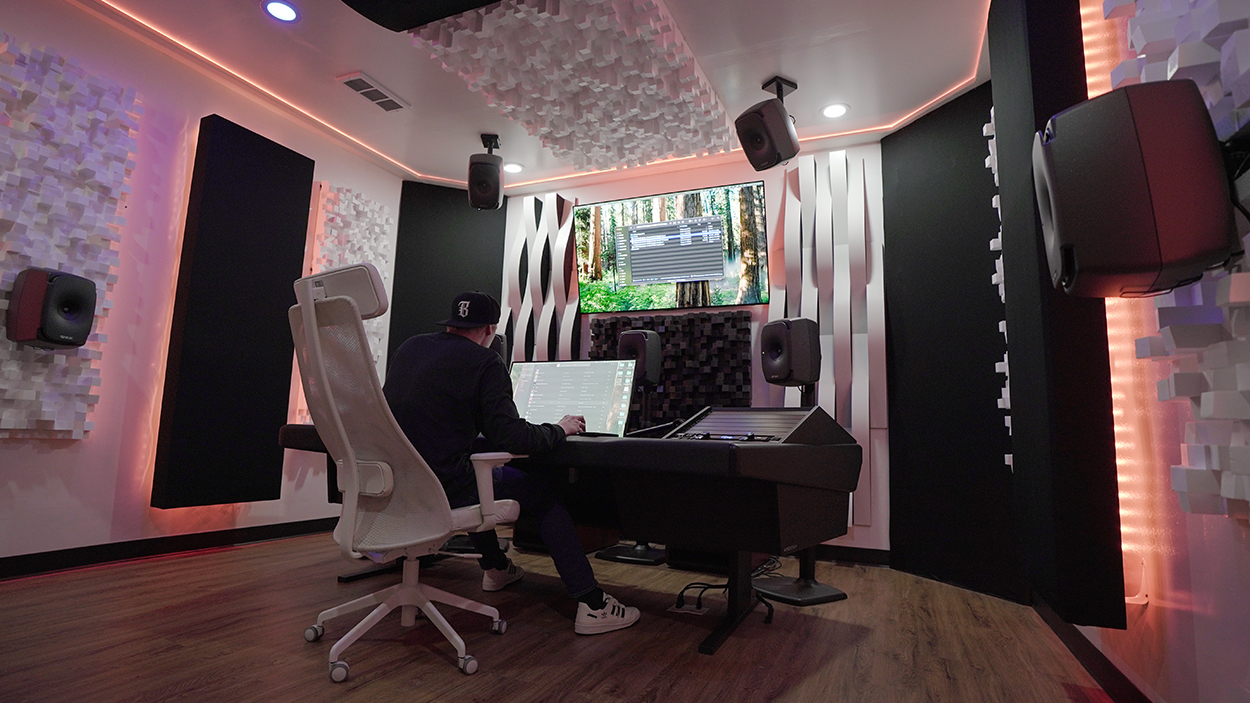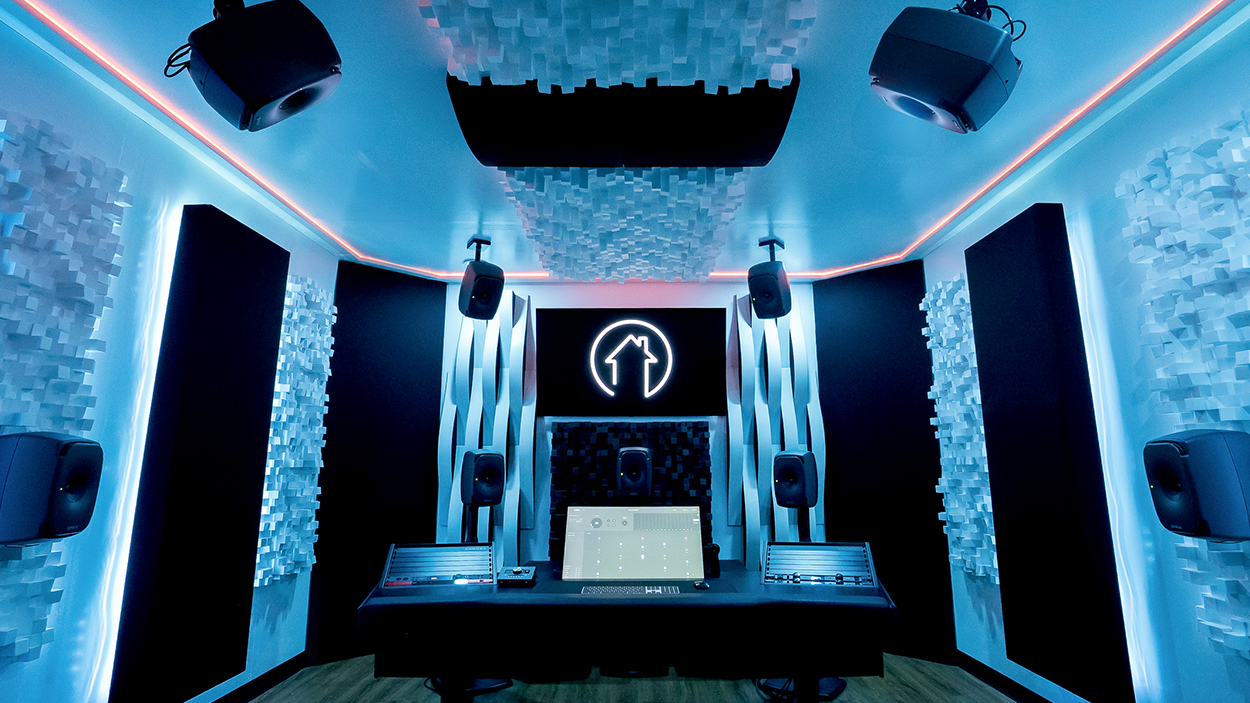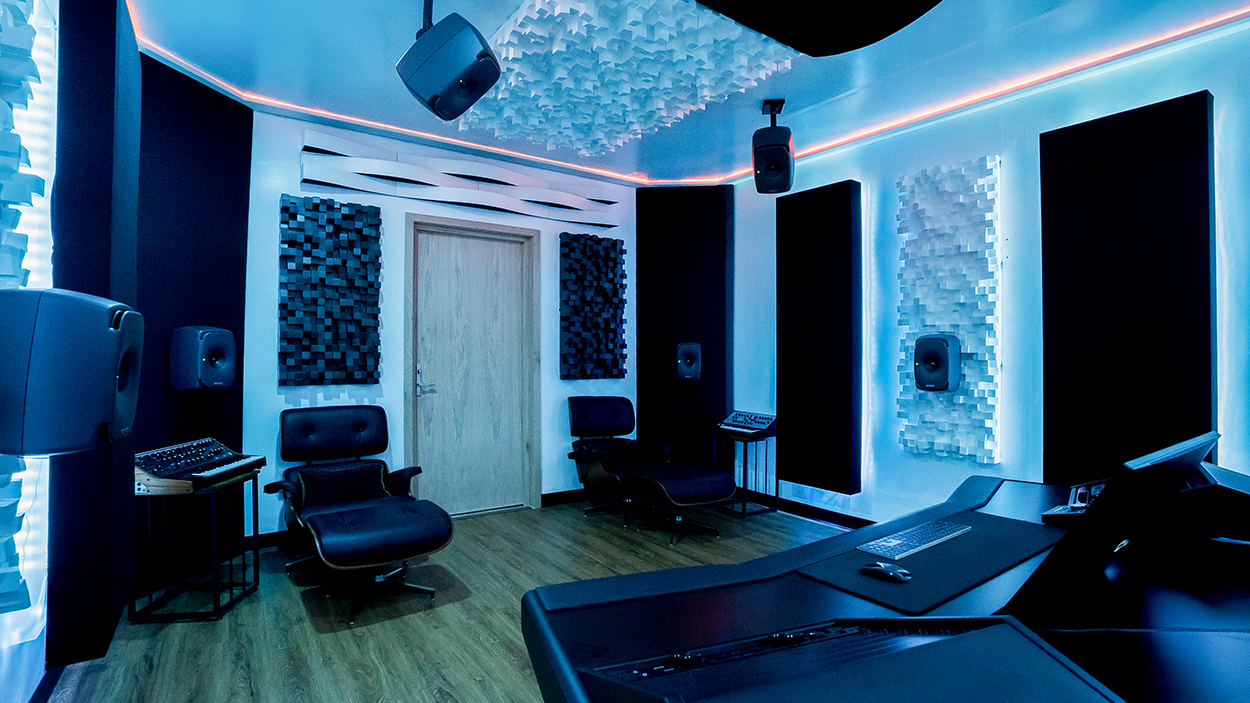Immersive Talk with Taylor Jaymin
Can you please introduce yourself, tell us your job title, and tell us a little bit about what you do, and how you ended up doing it!
My name is Taylor Jaymin, also known as TJ, and I’m the Lead Dolby Atmos and Immersive Audio Engineer at NoiseHouse and Insomniac Radio. My role involves handling all of our live show audio captures, overseeing radio broadcasts, and mixing and mastering both Dolby Atmos and stereo projects.
I found my way into this position by carving out my own lane within the company, and I’m incredibly grateful to Daniel Bailey, the owner of NoiseHouse, for recognizing my vision and fully supporting me along the way. His trust has allowed me to push creative and technical boundaries in immersive audio, and I couldn’t be more excited about where this journey continues to take me.

Can you tell us about your studio space? Where its located, any history of the building, the approximate size of the studio?
NoiseHouse, located in Irvine, California, currently operates three studios, each designed for specialized audio production.
Studio A is a dedicated stereo production and mixing studio.
Studio B is our 7.1.4 Dolby Atmos studio, measuring approximately 20 feet by 15 feet with a 10-foot ceiling.
Studio C serves as both a stereo production/mixing studio and a radio broadcast room.
Additionally, we’re gearing up to break ground on a brand-new dedicated radio broadcast studio, further expanding our capabilities in audio production and live broadcasting.

Can you give an overview of the key equipment you use in the studio – consoles/DAW/processors/sound sources/signal distribution etc.?
I like to keep my workflow simple. For Dolby Atmos mixing and mastering, I use the Audient Oria as my audio interface and monitor controller. I love how easily it connects to the Dolby Atmos Renderer and lets me flip through downmixes super-fast. My main DAWs for mixing are Studio One, Pro Tools, and Cubase, while Ableton is still my go-to for producing.
What type of work do you do in your studio?
Alongside Dolby Atmos mixes of our clients’ tracks, we are creating full-length Dolby Atmos DJ mixes with artists. This is an exciting new frontier, and while it’s a complex process with such a massive amount of data, the final product is super fun and absolutely mind-blowing!
Is there a particular Immersive format you specialise in?
Dolby Atmos mixdowns & DJ Mixes
How and when did you become interested in immersive audio?
I became interested in immersive audio around 2020. My good friends Rob and Luca over at Studio DMI started building their Dolby Atmos studio around then and I would always ask Rob a bunch of questions.
What made you finally equip your studio for immersive, and can you describe how you did the upgrade? If you worked with any external people or had work done on the studio, can you provide some details?
We designed the studio primarily for Dolby Atmos and immersive audio, but I also wanted it to be fully capable of stereo mixing, mastering, and film audio editing. I personally oversaw the design, working closely with the NoiseHouse team, and custom-built it with the help of two great friends. Huge thanks to Andrew and Scott—couldn’t have done it without you!
The planning process took about six months, from mapping out every detail to sourcing gear and materials, while the actual build was completed in just three months. A special thanks as well to my reps, Michael Dunkan at Sweetwater and Ryan Coomer at Vintage King LA, for all your support throughout the process!

Now that you are working in immersive, can you describe how you approach it, how it differs from stereo mixing, and what creative opportunities/challenges it presents?
My approach to mixing in immersive audio starts with establishing a solid stereo foundation, ensuring the key elements are balanced and impactful. Once that’s in place, the real creativity begins. Mixing in immersive formats offers far more possibilities, almost like producing music with complete freedom to shape the space and movement of sound.
Can you describe your Genelec monitoring system (format, models etc)? Can you tell us why you chose Genelec, and how the monitoring system helps you to work in immersive?
NoiseHouse features a state-of-the-art 7.1.4 Dolby Atmos studio, powered by 11 Genelec 8341A monitors. We chose Genelec because NoiseHouse founder Daniel Bailey has been a longtime advocate of their speakers—and for good reason. The level of clarity and detail they deliver is truly next-level.
Did you use GLM (Genelec Loudspeaker Manager) to calibrate your system, and can you describe what difference that makes?
Yes, I calibrated the system using GLM—an essential step in achieving an accurate and balanced listening environment.
Can you list some of the immersive projects you have worked on recently, and is your immersive room bringing you new business? Was it a good commercial decision?
Some of my recent projects include ANYMA – Hypnotized (John Summit Remix), Joel Corry – Tears On My Piano, Dombresky – It’s A Party, and VNSSA – Grindhouse, to name a few. I’m also working on some exciting projects that I can’t share just yet—but stay tuned for announcements soon!
How do you see the future of immersive audio over the next few years?
I believe immersive audio is set to play a major role in both the music and automotive industries in the coming years. Once someone experiences music in this format, it’s a game-changer. I recently had the chance to listen to a Dolby Atmos car system at NAMM, and I was blown away by how closely it matched the experience of our studio setup. The possibilities for immersive audio are limitless, and I’m excited to see how it continues to evolve.
Kit list
11 x 8341A
